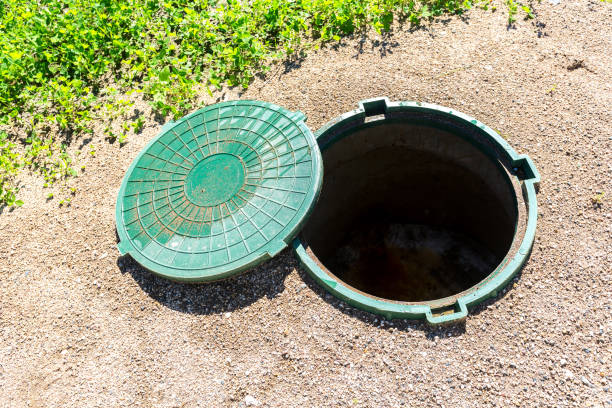Septic systems are a vital wastewater solution, especially in rural or unconnected areas. But their success goes beyond the tank itself – soil composition plays a hidden but crucial role.
Soil is a mix of minerals, organic matter, air, and water. The proportions of sand, silt, and clay determine its texture and how it handles wastewater. A septic system works by sending wastewater from your home into a tank, then releasing it into a drain field for the soil to filter.
This partnership between your system and the ground means soil composition heavily influences efficiency.
Let’s dive deeper into how different soil types impact septic system design and function.
The Importance of Soil Permeability
Permeability refers to how easily water moves through soil. In the world of septic systems, permeability is king. The rate at which soil can absorb and transmit treated wastewater from your drain field determines the size and overall success of your septic system.
Different soil textures greatly influence permeability:
- Sandy soils: Their large pore spaces allow water to travel quickly, sometimes too quickly.
- Clay soils: Tiny particles and less interconnected spaces lead to very slow water movement.
- Loamy soils: These offer a desirable mix of sand, silt, and clay, providing balance between drainage and filtration.
The ideal soil for a septic system balances adequate drainage with the ability to filter contaminants before effluent reaches groundwater.
Clay Soils
Clay-rich soils are a septic system’s nemesis. With their slow permeability, drain fields tend to become oversaturated, potentially leading to backups into your home or untreated wastewater surfacing – neither pleasant nor environmentally friendly.
However, all is not lost in clay! Specialized designs can adapt septic systems to this challenging soil type:
- Larger drain fields: Increased surface area helps compensate for slow drainage.
- Mound systems: These elevated drain fields create additional filtering soil above the natural clay layer.
- Alternative technologies: Aerobic treatment systems or specialized sand filter systems might be necessary in extremely poor draining soils.
The critical point is that installing a standard septic system designed for loamy soils in a clay environment spells disaster. This emphasizes that accurate soil testing is non-negotiable before proceeding with any septic system installation.
Sandy Soils
While clay provides drainage headaches, overly sandy soils present a different problem. Their excellent permeability risks becoming too much of a good thing. Wastewater filters through sandy soil so quickly that microbes and particles within the soil don’t have adequate time to fully treat the effluent. This potentially leads to contamination of groundwater, a critical source of drinking water for many communities.
Design techniques to combat this issue include:
- Extended drain lines: Increasing the length of pipes in the drain field provides more treatment time.
- Specialized chambers: Certain chamber setups within the drain field slow down the wastewater flow and improve filtration.
- Pressure dosing systems: These release wastewater in controlled surges rather than constant drips, helping improve soil saturation and treatment.
Soil Testing and Septic System Design
Thorough soil testing by a qualified professional is non-negotiable before installing a septic system. It’s not just about eyeballing your backyard and guessing if the soil looks “clay-like” or “sandy.” Professional tests offer critical details:
- Percolation test: Determines how quickly water moves through the soil, directly informing drain field sizing.
- Soil profile analysis: Reveals soil layers, depth to bedrock or water table, and other factors affecting system placement and design.
The results of these tests become the blueprint for your septic system. They shape the drain field’s size, chosen technology, and even its location on your property to ensure optimal functioning and environmental protection.
Beyond Composition: Other Soil Factors
While soil texture steals the spotlight, other soil properties also play a supporting role in septic health:
- Soil depth: Adequate soil depth beneath the drain field is needed for filtration before reaching bedrock.
- Water table: A high water table limits usable soil depth and increases contamination risk.
- Landscape slope: Steep slopes can cause system malfunctions and affect the distribution of wastewater.
These factors add an extra layer of complexity, emphasizing the need for expert assessment to determine your site’s suitability and plan your ideal septic system.
Conclusion
Understanding the fundamental impact of soil composition on septic systems empowers you as a homeowner to make informed decisions. It shifts your perspective from the septic tank alone to the soil, an unseen yet critical component. This knowledge ensures not only a long-lasting, efficiently functioning septic system but also plays a pivotal role in protecting groundwater – a precious resource for our communities and the environment.
Soil testing, informed choices, and the right design adaptations tailored to your site characteristics create a harmonious relationship between your septic system and the earth beneath it. Working with the soil, rather than against it, unlocks a sustainable wastewater management solution.
If you’re in need of septic services, be it inspections, repairs, installations, or related excavation projects, be sure to check out VI Reel. Our services cover Nanaimo and all across Central Vancouver Island. Visit our website at VI Reel to learn more about how we can help you with your septic and excavation needs.


